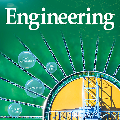Symbolic execution has always been plagued by the inability to handle programs that require highly structured inputs. Most often, the symbolic execution engine gets overwhelmed by the sheer number of infeasible paths and fails to explore enough feasible paths to gain any respectable coverage. In this paper, we propose a system, InVaSion, that attempts to solve this problem for forking-based symbolic execution engines. We propose an input specification language (ISL) that is based on a finite-state automaton but includes guarded transitions, a set of registers and a set of commands to update the register states. We demonstrate that our language is expressive enough to handle complex input specifications, like the Tiff image format, while not requiring substantial human effort; even the Tiff image specification could be specified in our language with an automaton of about 35 states. InVaSion translates the given program and the input specification into a non-deterministic program and uses symbolic execution to instantiate the non-determinism. This allows our tool to work with any forking-based symbolic execution engine and with no requirement of any special theory solver. Over our set of benchmarks, on an average, InVaSion was able to increase branch coverage from 24.97% to 67.84% over baseline KLEE.
翻译:由于无法处理需要高度结构化投入的程序,执行的象征性执行引擎一直受到困扰。 通常, 象征性执行引擎被大量不可行的路径所压倒, 并且未能探索足够可行的路径以获得任何值得尊重的覆盖。 在本文中, 我们提议了一个系统, InVaSion, 试图解决这个问题, 试图解决基于基于金字钉的象征性执行引擎的问题。 我们建议一种输入规格语言( ISL), 它基于一个有限状态的自动图案, 但它包括保密的过渡、 一套登记簿和一套命令来更新登记国。 我们证明我们的语言已经表达得足够, 能够处理复杂的输入规格, 像蒂夫图像格式那样, 而不需要大量的人文努力; 甚至蒂夫图像规格也可以用我们的语言用大约35个州的自动地图来指定。 InVaSion将给定的程序和输入规格转换成一个非确定性的程序, 并使用象征性执行来回调非确定性。 这使得我们的工具能够使用任何基于King的象征性执行引擎, 并且不需要任何特殊的理论解算器。 Inleal84 pressel cloveal cal laber labs a sover a suide a subre subus subleg subus abus subal abal ableglegal abal ablegal ablegis a sublegal abal abal.




